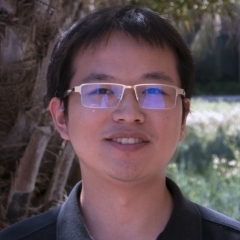
Date:
Location:
Speaker:
Title: Patterning with Polymer Thin Films for Area-Selective Deposition
Advisor: Rachel Segalman
Abstract:
Thin film patterning techniques enable a variety of advanced technologies including integrated circuits, photonic devices, sensors, and tailorable adhesion. For many of these target structures, sequentially patterning multiple layers involving different types of materials (e.g., metals and dielectrics) is required. In turn, this often imposes stringent overlay demands that increase process complexity and cost. A concept known as “self-aligned patterning” can in principle ease these challenges by leveraging chemistry to selectively deposit material only on certain regions of heterogeneous surfaces. Typically, this is achieved by controlling the topography and/or surface chemistry of the underlying substrate via pre-processing. However, traditional approaches, e.g., atomic layer deposition (ALD) can be time-consuming and expensive. In my presentation, I will introduce two novel approaches that significantly reduce the processing time, cost, and complexity.
Spin dewetting is an emerging technique, which results in the local segregation of polymers during spin coating and requires no post-processing or additional steps to generate patterns. Past work has highlighted the simplicity of spin dewetting in comparison to more complex patterning approaches. Despite promise, there still remains significant uncertainty surrounding the design rules that govern spin dewetting as a function of material selection and processing. In the first approach, I systematically investigate SAM-promoted spin dewetting using homogeneous (SiO2) and heterogeneous (Cu/SiO2; TiN/SiO2) substrates that are relevant to the microelectronics industry. Significantly, incomplete SAM layers are sufficient to induce spin dewetting, resulting in selective polymer deposition on Cu and TiN lines under optimal conditions.
However, it may not always be convenient or even possible to pre- or post-process a substrate for self-aligned patterning, and a more general strategy without such constraints would be appealing. In the second strategy, I demonstrate that spin dewetting can be achieved without substrate pre- or post-treatment by appropriately tailoring polymer chemistry. Still using Cu/SiO2 as a model system, semi-fluorinated poly(acrylates) selectively deposit on Cu in under one minute without any chemical modification of the underlying substrate. The elucidation of universal design rules further provides predictive control over selective spin dewetting regimes on heterogeneous surfaces across a variety of monomer structures and polymer molecular weights.



